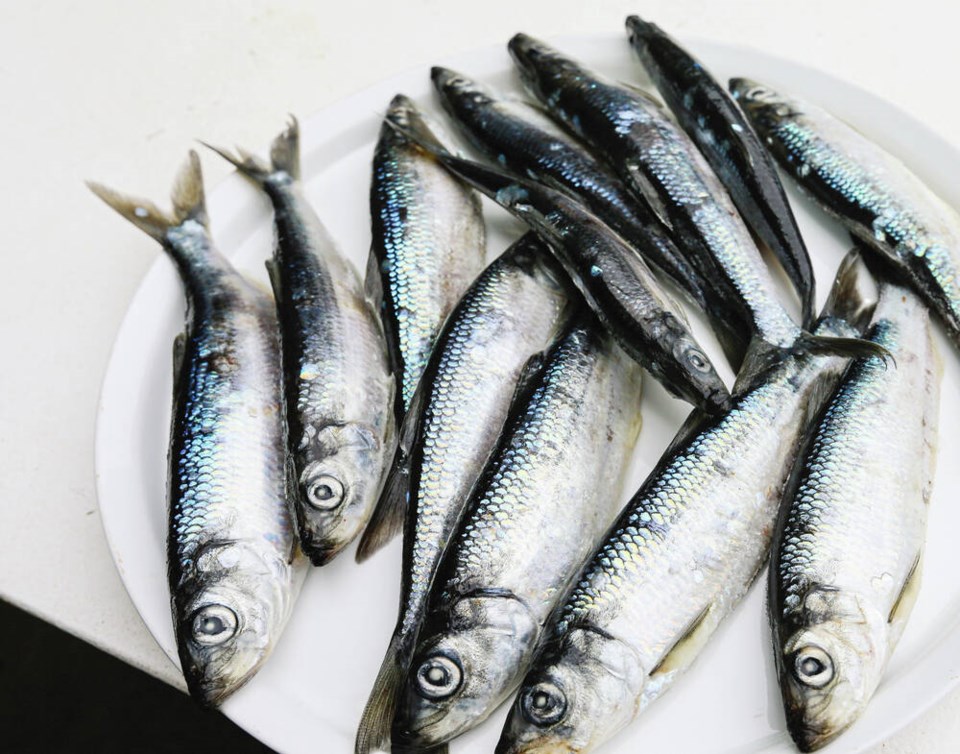Pacific herring may be small in size but they are one of the most important fish in British Columbia’s marine waters.
Herring have been described as “the foundation of the marine ecosystem” as they are central to the diet of many of our fish, sea birds and sea mammals. Herring are critical to the diet of chinook salmon that are the primary food source for endangered Southern Resident Orca population.
Historically, annual herring spawns took place up and down the coast and throughout the Salish Sea. Herring were one of the most important food sources for coastal First Nations. Unfortunately, most of the large herring runs have fallen victim over the years to DFO mismanagement and fishing industry greed.
Today only one major spawning area remains, between Parksville and Comox and around Hornby and Denman islands, but now there are very clear signs that this population is also failing.
For a number of years conservation organizations, First Nations and members of the scientific community had been raising the alarm that this last major herring run was in trouble. These groups believe that given the critical importance of herring to the ecosystem and with the uncertainties of climate change that the commercial herring fishery should be reduced or suspended all together.
The industry harvests herring during their spawn as the aim is to catch the fish just prior to the females releasing their eggs. There are no other fisheries in Canada (and most of the world) that allow the killing of fish on their spawning grounds.
Unlike salmon, herring do not die after spawning but return year after year to spawn again. By allowing industry to kill the mature herring on their spawning grounds we not only prevent them spawning to create the next generation, we also remove whole year classes of mature fish from potentially spawning in the following years.
One does not need to be a scientist to understand that such a fishery is unsustainable.
The primary goal of the fishery is to extract the mature egg skeins to be sold mainly to Japan as a delicacy. The remains of the females and all of the males, which is about 90 per cent of the harvested biomass, is not used for human consumption but for pet food and salmon farm feed.
Not only that but the value of the herring harvest has plummeted over the past 25 years from several thousand dollars per tonne to just $500 or less in recent years. Why would we put our marine ecosystem at risk by continuing this wasteful and ecologically destructive management regime? Good question!
There was actually some good news this year when the new Minister of Fisheries, Joyce Murray, announced she was reducing the herring quota by 50 per cent in the Strait of Georgia despite strong objections of the fishing industry.
This positive decision raised hopes for a strong spawn this spring but when the herring did arrive in early March it became clear that the spawn was one of the smallest and lightest in recent history.
Despite the best efforts the commercial seine and gillnet fleets they only managed to catch 4,300 tons of their 7,850 ton quota: a quota that the minister had already reduced by 50 per cent! The fish were just not here.
Changes to the commercial herring fishery are long overdue. Given the low return of herring this year we may now be facing the point of no return for the last major spawning population on the coast. Four other major spawning areas in B.C. were fished into oblivion years ago and none of them have recovered.
We have all read about how the Atlantic cod population was destroyed by mismanagement and overfishing and that population has not recovered in almost three decades.
If we allow our herring population to follow the path of the Atlantic cod the implications for this coast cannot be underestimated. Herring are the foundation species so if they collapse it will severely impact the health and survival of almost every marine species in our waters.
In addition to a moratorium on the commercial herring fishery we also need a Herring Recovery Program to protect and restore herring stocks, and to help fishermen and shore workers phase out of the industry.
The future of the entire marine ecosystem depends on healthy herring stocks so let’s ensure that herring do not become the next Atlantic cod.



